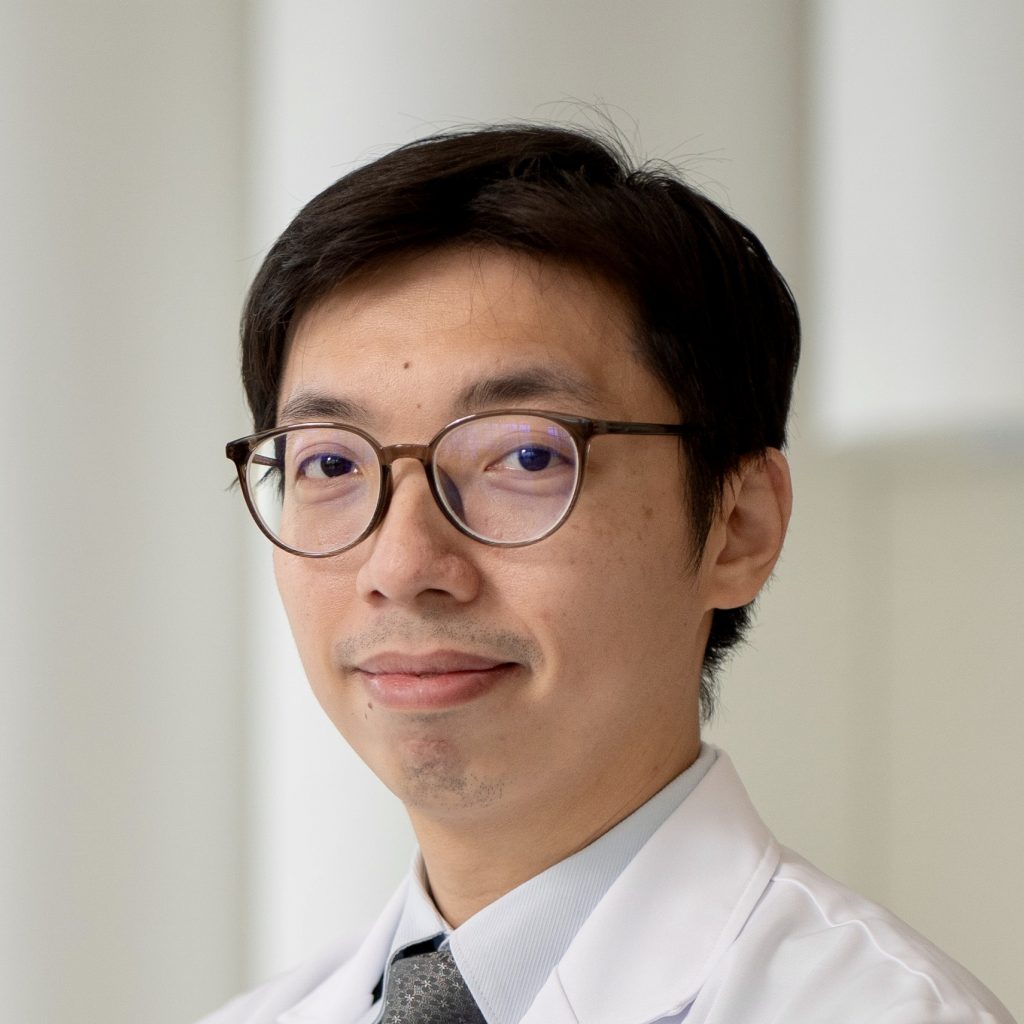May 2024 | Volume 25 No. 2
Measure of the Mutations
Listen to this article:
The innovative platform was developed by a cross-disciplinary team comprising researchers from the Faculties of Medicine and Engineering, and uses novel screening methods and advanced genetic techniques to identify the specific genetic and cellular factors responsible for promoting syncytia formation – which contributes to virus spread and disease severity.
“The unique perspective lies in the power of the throughput – we can perform large-scale screening on the cell-cell fusion phenotype that no previous technology can achieve,” said Professor Alan Wong Siu-lun, Associate Professor in the School of Biomedical Sciences, HKUMed, who led the research.
“For screening the many possible mutations (like the ones for SARS-CoV-2), we definitely need a method to enable us to achieve large-scale screening in a short time frame. Prior to this work, to the best of our knowledge, no large-scale quantitative analysis that directly reveals how mutations of the spike protein affect the cell-cell fusion process has been reported.”
The novel system they developed uses split green fluorescent protein which gives out signals when cells fuse together. This was combined with a microfluidics-based system and large-scale mutagenesis to create a new platform enabling rapid screening and analysis of spike protein variants and their fusion capabilities.
Previous studies have shown that certain variants, such as the Delta strain, form larger syncytia than the original strain of the virus, and the team discovered that a single K854H mutation can transform the Omicron variant into a strain that forms fusions from a low rate to a high rate. To enhance the efficiency, they then developed a new strategy using size-exclusion selection to sort fused and unfused cells on a large scale, and this enabled speedy screening. The resulting system has an accuracy rate of over 80 per cent, and is also 39 times faster than traditional methods.
“For traditional imaging-based methods, with an imaging throughput of about 30 seconds per sample, screening a genome-wide CRISPR library of 37,722 sgRNAs is estimated to take about 13 days,” said Professor Wong. “We have developed two new methods. With our first droplet microfluidics-based method, it is estimated that screening the same library would take a total of about seven days. With our second size-exclusion-based method, the screening would take around eight hours.”
The collaboration between HKUMed and the Faculty of Engineering began around 2021. “SARS-CoV-2 kept evolving, and we were seeing that variants like Delta could increase the virus’ cell-cell fusion ability and enhance disease severity,” said Professor Wong. “We thought there is a real need to track the new and potential mutations and look at their degrees of infectivity, as well as their impact on disease severity. We thus thought about the different possibilities and came up with our new methods.”
Previously, Professor Wong’s lab had been working to develop new technology platforms for large-scale screening – such as protein mutagenesis and CRISPR-based genetic perturbation screening, etc – so they already had related expertise in identifying genetic and cellular factors responsible for different diseases like cancers. “However, we were not working with infectious diseases previously,” he said, “and with COVID-19, we moved on to explore the collaboration to develop new methods for syncytia formation (cell-cell fusion).”
Post-mortem samples taken from individuals who died of COVID-19 have shown extensive lung tissue damage with the presence of large multi-nucleated syncytial pneumocytes due to cell-cell fusion, and scientists consider syncytia to be a frequent feature of severe COVID-19. Syncytia are formed by two or more cells fusing. SARS-CoV-2 induces syncytium formation when the spike protein on the surface of an infected cell interacts with receptors on neighbouring cells. Syncytia contribute to pathology by facilitating viral dissemination.
Knowledge gap
“We realised that there was an important knowledge gap and people hadn’t really been looking at syncytia formation in great detail nor at the technical difficulties involved in studying syncytia in large-scale and high throughput,” said Professor Wong. “Our team were able to utilise innovative screening methods and advanced genetic techniques to identify the specific genetic and cellular factors responsible for facilitating syncytia formation.”
The research marks a major step towards developing effective interventions and treatments to block the fusion and potentially restrict virus spread. In addition, at the same time, the team were also able to identify two FDA-approved drugs that may ease disease severity.
“With our new method, we were able to identify – from an unbiased viewpoint – the important drug targets that can be potentially treated by the FDA-approved drugs via repurposing,” said Professor Wong.
The innovative methodology potentially has other uses too. “We hope this can be expanded to studying the mutational effects of various viruses that cause cell-cell fusion, as well as screening different types of cell-cell interactions – including tumour and immune cell interactions,” he said. “We also will try to develop other additional types of enabling high-throughput large-scale screening systems.”
The unique perspective lies in the power of the throughput – we can perform large-scale screening on the cell-cell fusion phenotype that no previous technology can achieve.

Professor Alan Wong Siu-lun

